And he was fascinated how the world didn’t know what she did until 2000, when four Kansas high school students researching a school project shined light on Sendler’s courage, inspiring a book and Hallmark movie.
Howaniec and 84 other middle school students observed the anniversary of the liberation of the Auschwitz death camp Friday by presenting their Holocaust research to school visitors.
Emily Barnhart did her project on Judith Isaacson, an Auschwitz survivor and beloved Auburn resident. After World War II, Isaacson moved to Auburn, became a Bates College administrator, and was an inspiring lecturer and author. She died in 2015.
Barnhart said she wanted to learn about Isaacson because she wants to go to Bates.
“She stood up (to power) in the concentration camp. She told them, ‘If you’re going to shoot my mom, shoot me too.’ She wrote the book “The Seed of Sarah.”
Bailey Evrard, 13, studied Auschwitz survivor Elie Wiesel, who became a famous author and Nobel Peace Prize winner.
Chloe Nadeau did her project on Anne Frank, a Jewish girl who documented her life in hiding from 1942 to 1944, during the German occupation of the Netherlands in World War II. Her book, “The Diary of Anne Frank” details that time in her life.
Emily Ouellette, 14, researched the Lodz Ghetto, a city in Poland “that got closed off to everybody who weren’t Jewish.”
She also studied Josef Mengele, a Nazi doctor “who decided who would die,” Ouellette said. “He did experiments on people. He was called the ‘Angel of Death,’ kids said he had an angel face, he looked nice.”
But he performed horrific experiments on children.
Students were assigned individual projects weeks ago after teachers Tricia Giard, Sue Callahan and Kim St. Pierre aligned their literature and social studies lessons on World War II and the Holocaust.
Each student had to decide who or what he or she would like to learn more about and complete a project. The projects were shown to the public Friday, the anniversary of Soviet troops liberating Auschwitz.
Howaniec said Sendler, the person he studied, wasn’t Jewish. She lived next to the Warsaw ghetto. As a nurse, she had a pass to go in and look for typhus.
Inside she saw much suffering and starving children. Working with a small network, Sendler used her pass to smuggle children out, hiding babies in boxes, in carpenter bins or dressed them as non-Jewish children.
The children were placed with Polish families. In case the Jewish families survived, Sendler put the children’s names and their adopted families inside jars and hid them.
“She could have been killed at any time,” Howaniec said. At one point she was captured and tortured by the Nazis. “They broke both her legs.”
Released on a bribe, Sendler went into hiding and lived obscurely until the four Kansas students interviewed those she saved. A book, “Life in a Jar,” followed.
Sendler died in 2008 at age 98 in Warsaw.
Howaniec offered a quote from Sendler he memorized: “‘Heroes do extraordinary things. What I did was not extraordinary. It was normal.’”
Before the school project, students said they weren’t aware of the details of what happened during the Holocaust “right there, in the middle of Europe,” said student Nick Kaiser, 14.
It’s important, several said, to understand what happened, pay attention to events today and prevent genocides from happening.
“And make sure we’re respectful to others,” said Bailey Evrard. “They might have more struggles than we know.”
Jack Nadeau, the father of student Chloe Nadeau, said he liked how students had to pick a person or event to research.
“They’re drilling down on something specific,” Nadeau said. Learning and putting their projects together gives them the perspective of the victims, he said.
“It gives a good awareness,” he said. “It’s important for us to remember how horrific it was and never allow another world leader to repeat it.”
Remembering genocide victims
AUBURN — Visitors to Auburn Middle School on Friday were given paperclips to commemorate International Holocaust Remembrance Day, Jan. 27.
Paperclips were worn by Norwegians during World War II to demonstrate their opposition to Nazism and anti-Semitism.
Friday was the 72nd anniversary of the Soviet Red Army entering the Auschwitz death camp and liberating 7,000 survivors.
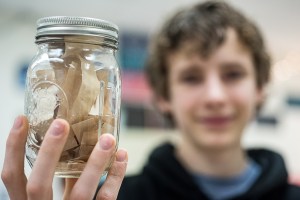
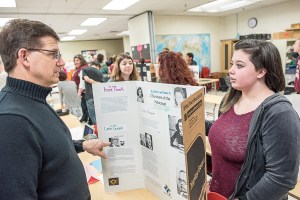
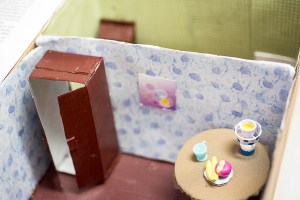
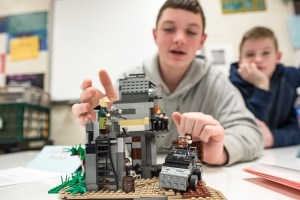
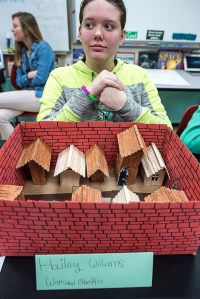
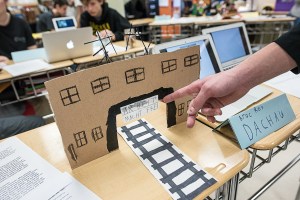
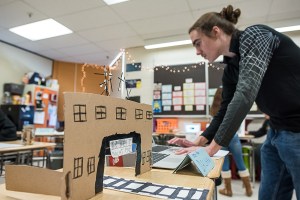
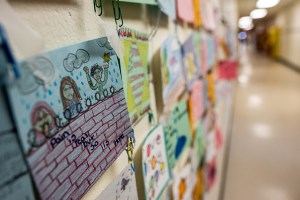
Comments are no longer available on this story